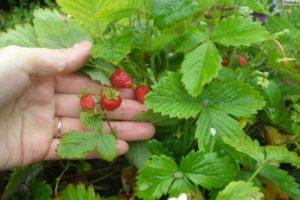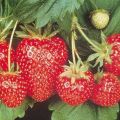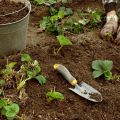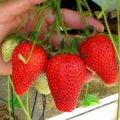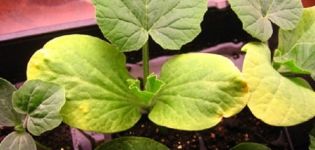Causes of the appearance of diseases and pests of strawberries, treatment and control methods
Garden strawberries are considered one of the most common berries in summer cottages. But diseases of strawberry varieties often appear with improper care. Most often, the culture suffers from fungal diseases. Some diseases not only destroy crops but also kill the plants themselves. Prolonged rains, cold snaps and thickening of plantings become factors of the appearance of pathologies. Even those species that are immune to disease do not always remain healthy.
Strawberry diseases and methods of dealing with them
In most cases, strawberries are affected by fungal diseases. When the first symptoms of disorders appear, strawberry bushes begin to treat immediately. In addition, preventive measures act as a method of combating diseases.
White rot
A characteristic sign of the appearance of this disease on strawberries is large white spots, which first appear on the surface of the leaves. As the disease progresses, the white spots spread to the berries. Gradually, the fruits become moldy and rot, and then fall off along with the leaves.
Fighting White Rot:
- planting strawberry bushes is recommended in elevated sunny areas;
- disinfect seedlings and soil before planting;
- leave a large distance between the bushes;
- regularly remove weeds and weed the soil.
When signs of white rot appear, strawberries are treated with fungicides. For example, the drugs "Switch" and "Horus" are effective.

Gray rot
Gray rot appears on strawberries more often than all diseases. The first sign of the disease is the appearance of hard dark spots, which are covered with a gray bloom. Moldy berries shrivel and rot. As the disease progresses, the spots move to leaves and stems.
Control methods:
- removing weeds and loosening the soil several times a month;
- the soil is sprinkled with ash and lime;
- with the onset of the flowering period and after it, strawberries are treated with Bordeaux liquid or the "Barrier" preparation;
- in the fall, cut off all the foliage, except for the mustache;
- garlic and onions are planted in strawberry beds;
- in the fall, the soil is mulched with straw or spruce needles;
- the harvest is removed as the berries ripen.
To prevent the appearance of gray rot, strawberries are transplanted to a new place every three years.
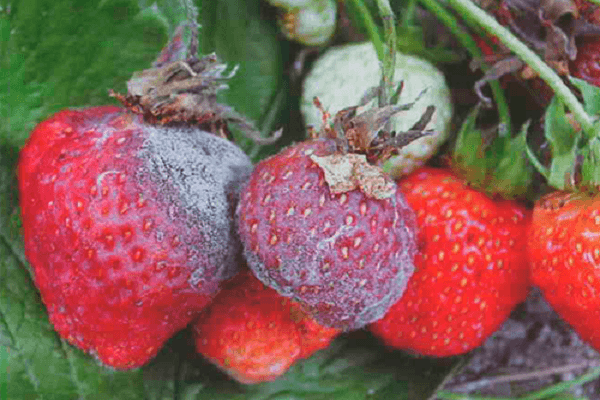
Black root rot
The disease is characterized by the appearance of black spots on young roots. Gradually, the root becomes brown, and the roots are brittle and weak.
Root rot is not treatable. If it appears, the bushes are dug up and destroyed away from the site. The soil is disinfected with peroxide or potassium permanganate.
Black fruit rot
Black rot appears due to humid and hot weather. Black spots appear only on the berries. The bushes stay healthy. The berries become watery, lose their shine and aroma.
With black rot, you will have to pick berries by hand and burn them. There is no other cure. To prevent the disease from appearing, the bushes are watered with potassium permanganate and nitrogen-containing fertilizing is regularly introduced.
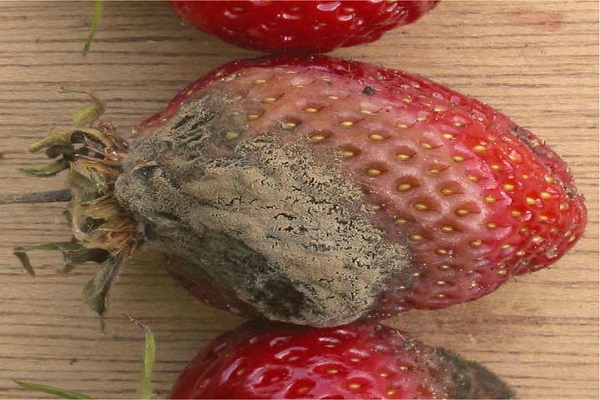
Late blight rot
Late blight is characterized by the appearance of seals on the fruits, the pulp becomes tough and bitter in taste. Gradually, the berries dry out. After a while, spots appear on the leaves.
Fight against late blight rot:
- together with the harvest, diseased leaves and mustaches are cut off and burned;
- process the beds before the onset of winter;
- when planting different varieties, leave a distance of at least 2 m;
- when planting the same varieties, the distance between the bushes is 30-45 cm.

Powdery mildew
Affects most crops on the site. Powdery mildew can be caused by waterlogged soil, cool weather and cold watering.
Signs of powdery mildew:
- white bloom on the leaves;
- decrease in yield;
- the leaves curl and fall off;
- the fruits rot.
To prevent powdery mildew, the bushes are treated with copper sulfate before planting. Before flowering, strawberries are sprayed with Topaz. The leaves are treated with mineral fertilizers.
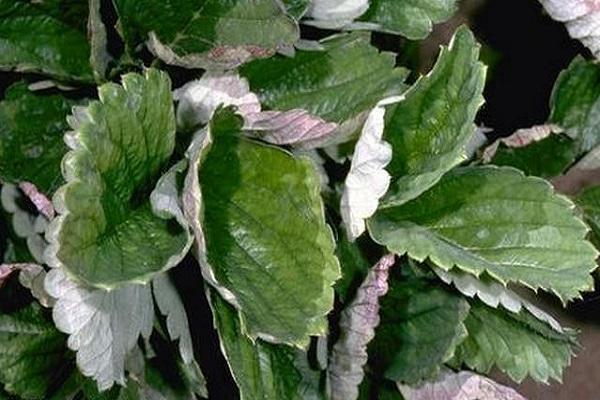
Fusarium
Fusarium appears due to heat and weeds in the beds. Plants turn brown and wither. Both the deciduous part and the fruits and even roots dries up.
Fusarium control measures:
- do not plant strawberry bushes in areas where potatoes have previously grown;
- replant bushes every 4 years to a new place;
- constantly remove weeds.
Before planting the shoots, the soil and root system are disinfected.
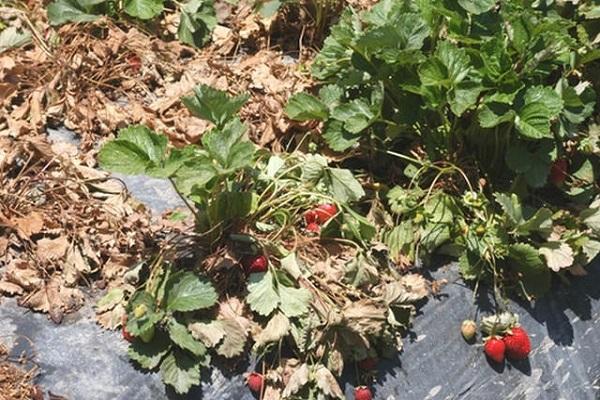
White spot
This disease is characterized by the fact that small scarlet spots appear on the foliage, which gradually increase in size and acquire a white tint.
To prevent the appearance of white spotting, the beds after harvest are fertilized with phosphorus and potassium fertilizers. You should also respect the distance between the seedlings and change the mulch layer every spring. For the entire fruiting season, strawberries are treated with Bordeaux liquid.
Anthracnose
Anthracnose affects all parts of the strawberry. Black spots appear on bushes, berries and stems. The first signs of the disease appear in May-June, when the weather is cool and humid.
If anthracnose was discovered early, then you can fight it with the help of fungicides and Bordeaux liquid. For prevention, strawberries are sprayed with Bordeaux liquid with the addition of sulfur.

Brown spot
With this type of disease, red spots appear on the leaves, which gradually turn brown. On the back, the spots are purple.
Fight against brown spot:
- treat strawberries with fungicides;
- in the fall, the soil is mulched;
- do not flood the beds so that the soil is not waterlogged;
- to increase the immune defense, strawberries are fed with nitrogen and phosphorus;
- after harvesting, the bushes are treated with Fitosporin.
In the spring, strawberries begin to rejuvenate the bushes and it seems that the brown spot has passed. But this is not always the case, so it is worth watching the bushes even after treatment.
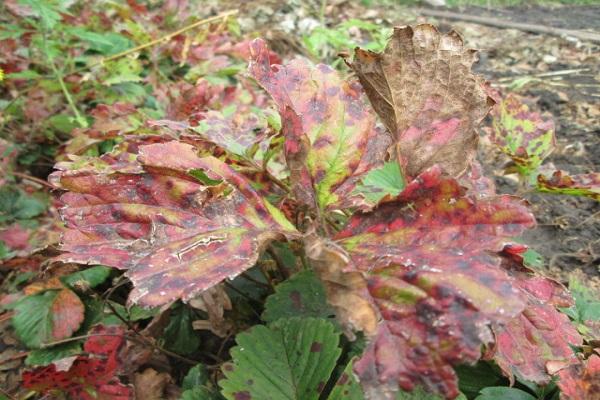
Verticillary wilting
With verticillary wilting, the lower leaves first dry out. Then the berries turn brown and the leaves fall off.In this case, the disease does not affect the amount of the crop.
Before flowering, strawberries are sprayed with fungicides and biologicals. During fruiting, it is impossible to spray strawberries with these substances, since they will accumulate in the berries.
Rust
Rusty marks appear on the leaves. Red spots appear on all leaves and stems. The affected leaves will have to be removed by hand and burned. You need to cut them off above the film so that the spores of the fungus do not fall on the soil. Planting strawberries near fruit trees is not recommended. You need to trim your mustache, thin out plantings and remove weeds on a regular basis. Do not overfeed strawberries with nitrogenous fertilizers.
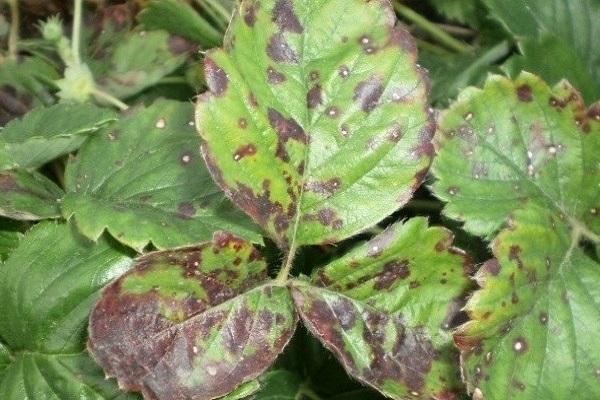
Strawberry pests and ways to protect against them
In addition to diseases, summer residents have to deal with pests on strawberries. Most often, insects appear during fruiting.
Shaggy bronze
Bronze is a bug about 12-13 cm long. The body is partially covered with yellowish villi. The beetle reproduces in the ground. In the spring, the hatched larvae come out and feed on the foliage. When a pest appears, it is recommended to dig the substrate to a depth of 10-16 cm. Also, straw or hay is burned on the site. Of the chemicals used, "Calypso".
Thrips tobacco
Larvae and adults gnaw the leaves of the bushes. The appearance of thrips leads to deformation of inflorescences and foliage fall. For destruction use "Sharpei", "Nurell-D" and "Karate".
Of the folk methods, watering with chamomile broths, infusions of orange peels, soap solutions and infusions based on dandelion is effective.
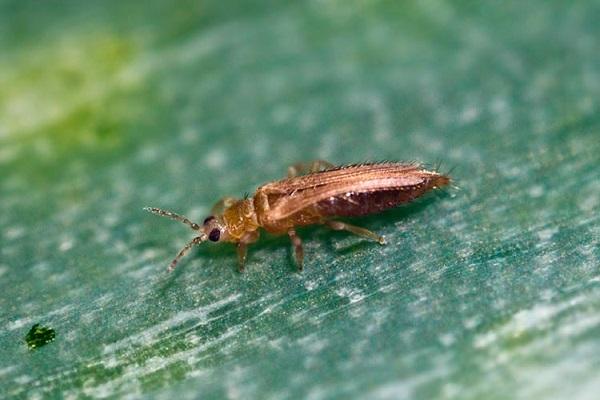
Spider mite
The chemicals Omayt, Ortus, Flumayt and Nurell-D are used against spider mites. Watering the beds with broths of tobacco, hot pepper, onion and garlic peels also helps.
Strawberry mite
Treatment with the drug "Karbofos" helps from this insect. Colloidal sulfur is also suitable. The first spraying is carried out after the bushes enter the growth phase. The second is after harvesting. Of the folk methods, spraying with a decoction of onion husks and yarrow is effective.
Slugs
Slugs are often found in humid and cool climates. They eat leaves, stems and fruits, damaging the crop. Insects hibernate in the soil. To prevent pests, the soil in the beds is mulched and covered with a special film so that in spring they cannot get out. The beds are treated with Slimak or metaldehyde. The bushes are sprinkled with wood ash and sawdust.
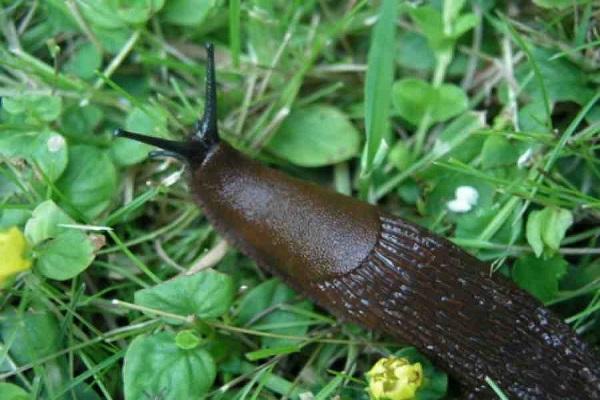
Medvedka ordinary
Getting rid of the bear is difficult. Traps with chemicals are buried in the soil - "Zolon", "Marshall". If the areas are large, then they are watered with a solution of these chemicals from a regular watering can. Marigolds and calendula are planted in strawberries.
Chafer
The larvae gnaw out the strawberry rhizome. The worms grow for several years, and all this time they feed on the roots. To combat the May beetle, nitrogen is added to the soil and clover is planted in the beds. From chemicals used "Zolon", "Karate" or drug "Sharpei". In the fall, the soil is dug as deep as possible so that the larvae are on the surface of the earth and freeze in winter.

Raspberry and strawberry weevil
Strawberry weevil eats leaves, receptacle. Productivity decreases, and bushes stop growing. When an insect appears, the leaves are collected together with fallen leaves and affected buds and burned. Plants are sprayed with "Karate" or "Nurell-D". A decoction of celandine, tansy and onions helps.
Green peach aphid
Aphids are destroyed with the chemical "Zolon". The substance "Nurell-D" is also suitable for this purpose. Also, the beds are watered with a decoction of tobacco, soapy water or tincture of hot pepper. Aphids always appear with ants, so if one species of insect appears, you can prepare to fight the second.
Strawberry leaf beetle
The pest on strawberries eats juicy leaves of plants.When the leaf beetle appears, small holes appear in the leaves, the fruits become small.
You can fight the leaf beetle with the help of "Karbofos", "Metaphos" or "Corsair". Before flowering, strawberries are processed twice. The last spraying is done after harvest. Also, after the snow melts from the site, strawberry beds are sprinkled with tobacco dust.
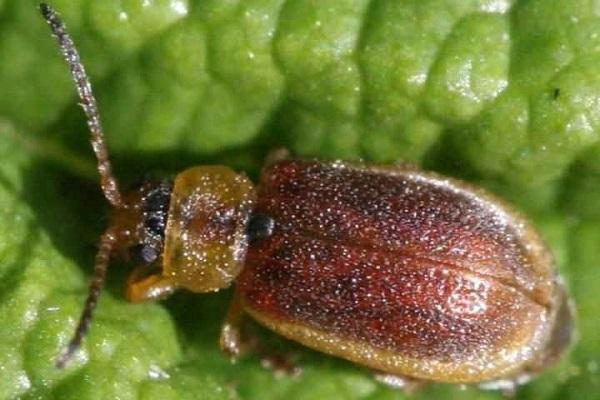
Strawberry nematode
The nematoda lives in deciduous sinuses and tries to sap. The strawberry nematode is a worm up to 2 mm long. Due to the pest, the leaves darken, the foliage and berries are deformed.
You can remove the pest with methyl bromide. The drug Fitoverm is also effective. From folk methods, transplanting bushes and watering the soil with boiling water are suitable. Transplantation is carried out in early spring.
Nettle weevil
The nettle weevil is a beetle with green wings and long whiskers. Weevils overwinter in the soil. The weevil eats the leaves. The larvae destroy the root system. Because of this, yield decreases and the rhizome dries up.
Among the chemicals used are "Karate", "Zolon" and "Nurell-D". Of the folk methods, infusions of plants such as henbane or yarrow are used to fight. In addition, replanting bushes is effective.

White midge
White midges are small white moth-like bugs. Usually appear on plants in numerous populations. Signs of the appearance of a midge are the presence of white bloom and light spots on the leaves. In addition, pests leave behind a discharge that leads to the appearance of a sooty fungus on strawberries. The white midge is a carrier of more than 20 diseases dangerous to crops.
Watering with soapy water, infusion of garlic and yarrow helps from insects. White midges can be washed off by hand with water. They are dazed early in the morning. Then the soil is sprinkled with ash and dug up.
Ants
Ants do not tolerate the smell of mint, lavender, wormwood, so these herbs are scattered between the rows. Boric acid helps with ants. It is mixed with sugar or honey, poured with water and placed on the site.
Of the chemicals from the ants helps "Muratsid", "Anteater", "Thunder-2". You can also dig up an anthill, destroying the larvae. The dug soil is mixed with ash, soda or lime.
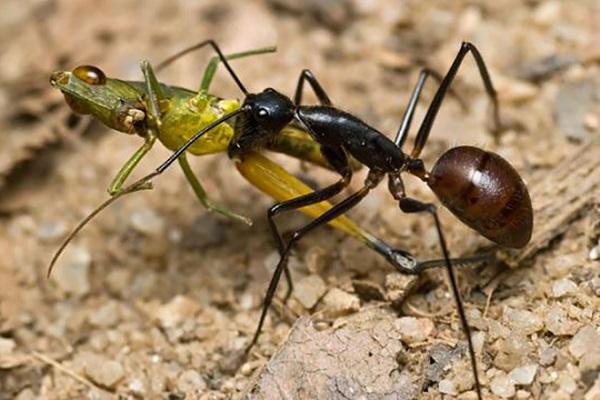
Horsefly bug
Due to the horsefly bug, the inflorescences and fruits become deformed, and the bushes grow poorly. Treatment with chemicals helps from the pest. For example, the drug "Aktara". In the fall, you should immediately remove and burn the fallen leaves on the site. In the summer, weeds are regularly destroyed in the strawberry beds. It helps loosening row spacings and digging up the soil in autumn.
Slobber penny
Foam clusters can often be seen on plant leaves. In them, the pennitsa slobber lays eggs. With a large accumulation of insects on strawberries, chemicals are used to kill them. The beds are sprayed with preparations "Aktara", "Kinmiks", "Karbofos", "Intavir". The berry is processed in the morning before sunrise.
From folk remedies, a solution of laundry soap helps. A decoction of tansy, wormwood, and garlic is also effective. The larvae can be destroyed by sprinkling the foam with wood ash. If an insect was found at the time of fruiting, the foam is washed off with water, and the adults are collected by hand.

How to keep birds away from strawberries?
Birds often peck at ripe strawberries, damaging the crop. You can save berries from birds using the following actions:
- cover garden strawberries with a net;
- to scare off birds, shiny objects, such as CDs, are hung on the site;
- install a scarecrow on the beds;
- install an electronic device that emits the sounds of birds of prey when other birds approach;
- spread or hang chopped onions in strawberries.
The most humane way to ward off birds is to plant rowan, cherry or sea buckthorn on the site. These berries attract birds more. But this is also the most ineffective way.
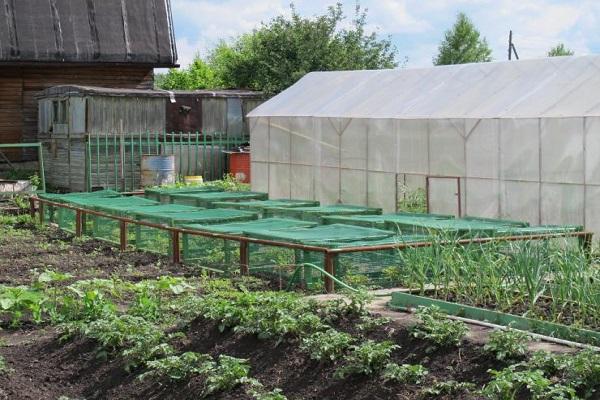
Prevention measures
Folk remedies often help from pests. For example, soap solutions, decoctions of onion peels, celandine, tansy and other herbs. When cobwebs appear on the bushes, they are immediately removed.
Preventive measures against diseases and pests:
- In the spring, once every 4 years, strawberries are transplanted to a new place.
- In autumn, the soil is dug to a depth of 10-15 cm and mulched.
- The soil is regularly fertilized with top dressing.
- It is not recommended to overmoisten the soil.
- You can not thicken the planting.
- The distance between the bushes when planting is 30-45 cm.
You also need to constantly destroy weeds from the site.
